Mount St. Helens, Washington
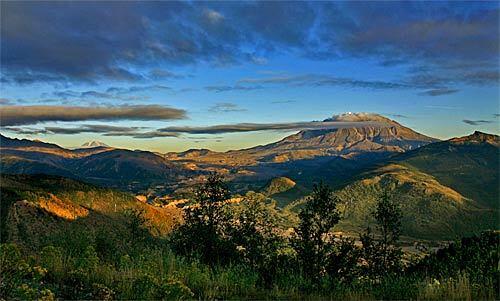
From a distance, Mt. St. Helens (at right in photo) seems a benign presence in southwestern Washington. But this member of the Cascade Range is the most active volcano in the continental U.S. and has a lethal past: 57 died when it erupted in May 1980. Its summit had been off-limits to hikers for two years when, in 2006, the danger of an imminent eruption was judged to have subsided and the Forest Service reopened the mountain, setting a 100-permits-per-day limit. (Myung J. Chun / Los Angeles Times)
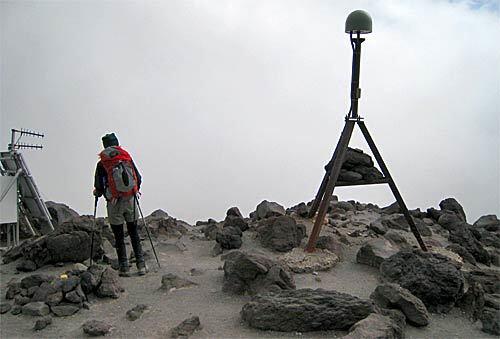
In an ashen-colored landscape, climbing ranger Gretchen Schwinn pauses near U.S. Geological Survey equipment during a descent of 8,365-foot Mt. St. Helens. In 1980, when an earthquake rattled Mt. St. Helens, 1,300 feet of the summit collapsed and an explosion of trapped gas killed wildlife and toppled trees over 200 square miles. (Myung J. Chun / Los Angeles Times)
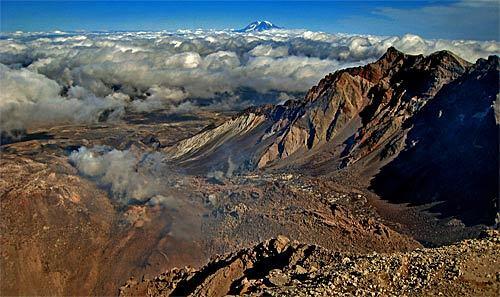
Mt. Rainier looms in the distance as steam and gas waft from a lava dome (left center) in the crater of Mt. St. Helens. Last fall, a volcano expert for the U.S. Geological Survey said the dome was growing by about 700 dump-truck loads of material daily. (Myung J. Chun / Los Angeles Times)
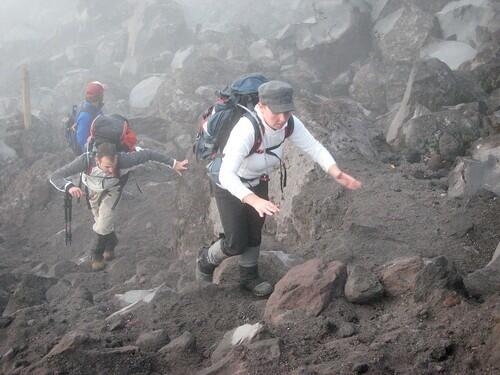
Mary and Brian Racciato of Washington pick their way among boulders en route to Mt. St. Helens’ summit. The jagged lava rocks along the path are the result of a volcanic outburst more than 500 years ago. A massive lava flow coated the mountainside, cooled and then broke into big, sharp chunks. The terrain may look lifeless, but it’s home to mountain heather and pearly everlasting. (Myung J. Chun / Los Angeles Times)
Advertisement
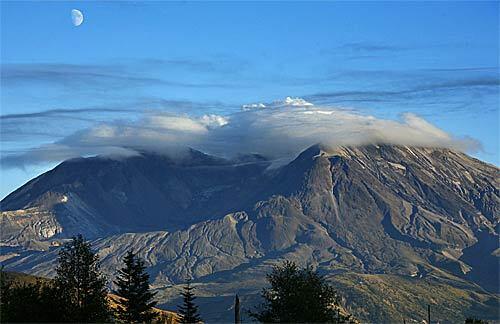
A pale moon hangs over the crater of Mt. St. Helens, shrouded by steam. The volcano is a volatile facet of the Pacific Ring of Fire, a band of volcanoes and shifting tectonic plates over an area that includes temblor-battered California. (Myung J. Chun / Los Angeles Times)
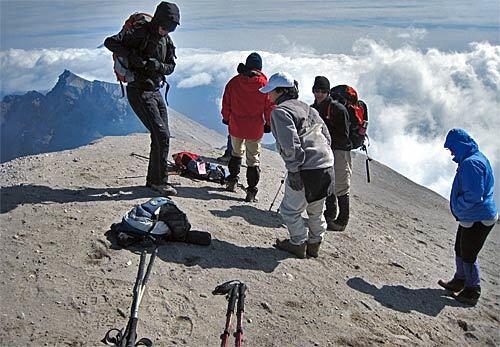
Cold winds snap at hikers atop Mt. St. Helens. They’ve ascended 4,600 feet to this point in an expedition that, round-trip, lasts eight hours or more. A Times reporter who made the trek last fall was part of a diverse group -- men and women, retirees and high school students -- from British Columbia and as far away as New Hampshire. (Myung J. Chun / Los Angeles Times)
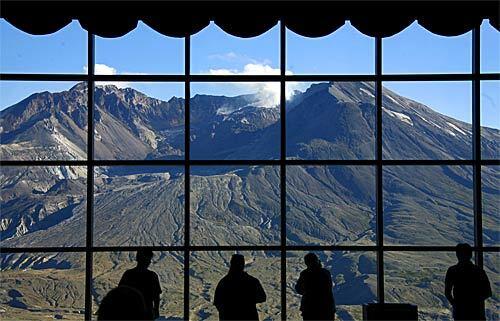
To viewers at the Johnston Ridge Observatory at Mt. St. Helens National Volcanic Monument, the volcano presents a weathered face. Chockfull of enlightening exhibits, the 16,000-square-foot observatory offers a wide-screen theater presentation of the 1980 blast. (Myung J. Chun / Los Angeles Times)
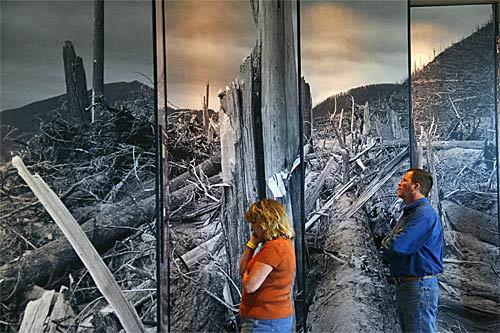
Visitors to the Johnston Ridge Observatory (elevation 4,300 feet) read survivors’ accounts of the 1980 eruption. Outside the observatory, the gently sloping, paved Eruption Trail allows walkers to view the effects of the eruption, including shattered trees and vistas of the lava dome, its crater, a pumice plain and landslide deposits. (Myung J. Chun / Los Angeles Times)
Advertisement
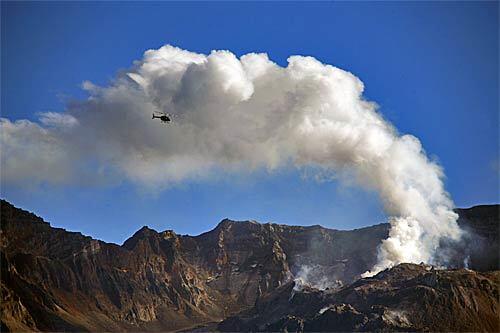
A helicopter gets an overhead view of the volcano. From a great altitude, Mt. St. Helens resembles a lanced boil -- a dirt-gray crater protruding from forest-green hills to the south and a valley of boulders, rivers and mountain lakes to the north. (Myung J. Chun / Los Angeles Times)
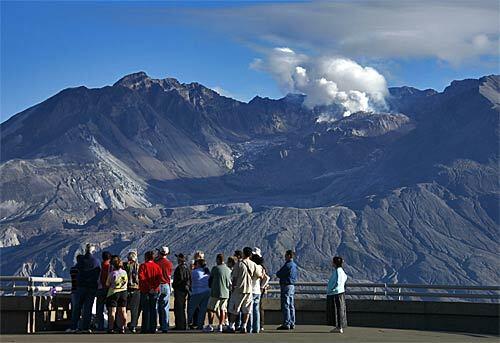
In the shadow of the volcano, a ranger delivers a presentation on the 1980 Mt. St. Helens eruption to visitors at Johnston Ridge Observatory. The structure is 5 1/2 miles from the crater -- as close as one can approach by car. (Myung J. Chun / Los Angeles Times)
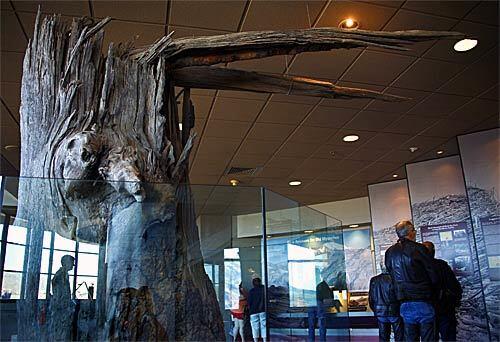
A shattered tree displayed at Johnston Ridge Observatory represents a mere speck of the 1980 blast’s devastation. (Myung J. Chun / Los Angeles Times)
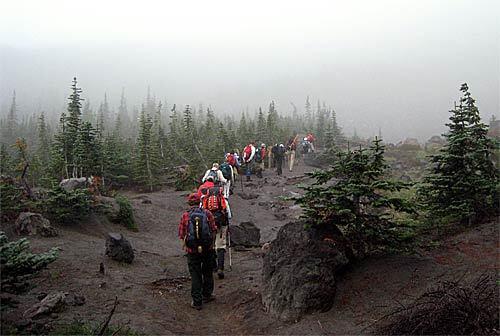
A party of hikers makes for the top of Mt. St. Helens on a foggy morning. Although 37 white wooden posts plotted a path from the timberline to the summit, a Times reporter found it was impossible to follow a straight line over the ragged boulders. (Myung J. Chun / Los Angeles Times)
Advertisement
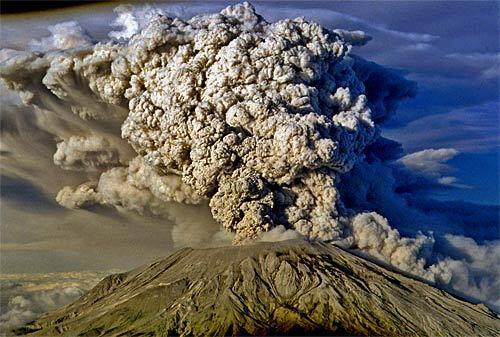
In late July 1980, a few weeks after the Mt. St. Helens disaster, the volcano was again in an eruptive mood. That passage of weeks was but a brief interval in the life of this volcano, born 40,000 years ago and named in the 18th century for British diplomat Alleyne Fitzherbert, whose title was Baron St. Helens. (Jack Smith / Associated Press)
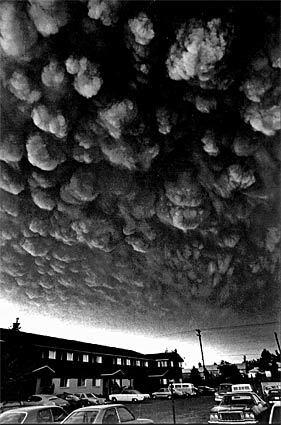
A cloud of volcanic ash fills the sky over Richland, Wash., well to the east of Mt. St. Helens, on May 18, 1980, the day of that memorable eruption. The effects were seen and felt far afield: A Times reporter remembers seeing ash falling the next day at his home in Northern California, 700 miles from the blast. (The Tri-Cities Herald / Associated Press)

Hikers prepare to descend from Mt. St. Helens. This group had been pursued by menacing storm clouds that, happily, gave way to a view of the lush green hills of the Gifford Pinchot National Forest, the sparkling deep blue Yale Reservoir and Lake Merwin. (Myung J. Chun / Los Angeles Times)



